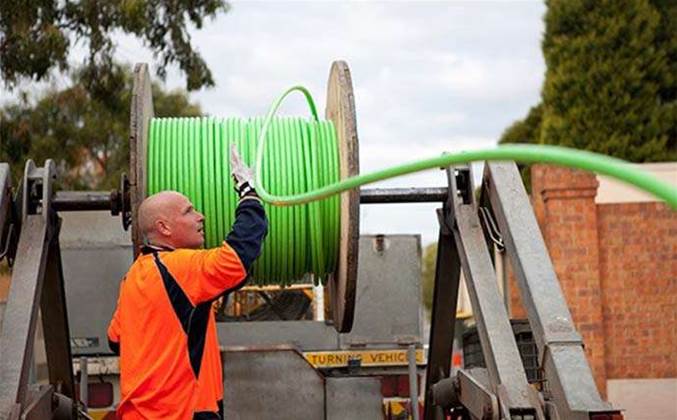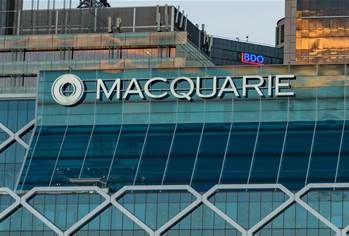NBN says it remains confident it can stay within in its construction budgets despite admitting it is working from flawed and unpredictable data for housing and core telecommunications networks.

NBN chief executive Bill Morrow revealed the two key sources of data that the national network builder relies on for its technology decisions frequently do not match what the company finds during physical on-site inspections and statistical surveys.
Morrow’s comments referred to the accuracy of both Telstra’s network data and the national housing database that draws on Australian Bureau of Statistics’ (ABS) information known as G-NAF - the geocoded national address file.
Public Sector Mapping Agencies (PSMA) Australia, a state, territory and federal government-owned company, has maintained the G-NAF database since 1993.
NBN signed a geospatial data deal with PSMA in March 2012. It first complained about the information's accuracy just several months later in May of the same year.
At the time it said it was investing in new systems to manually double-check the inaccurate PSMA address data.
When asked what efforts it had made since 2012 to improve data accuracy, an NBN spokesperson said it had worked to make "more effective use of our existing data sets as well as adding new data sets to our information base".
"This has helped us to have a more accurate picture of the premises that need to be connected to the NBN network – but we are always looking to see how we can further improve the data sets that we are using," he said.
Regardless, Morrow last week claimed the uncertainty about the data accounted for the potential $15 billion variance in its peak construction budget target and the company’s inability to accurately predict its broadband technology mix for the nation.
“We think there are 11 million [premises]. The G-NAF database suggests that, but when we actually go in and physically do the inventory, that number turns out to be different," Morrow said last week during a media tour of NBN’s construction operations in Brisbane.
"This is another hard prediction element. If we circle it and say there’s 4.5 million FTTN homes, by the time we get there we realise there’s only 4 million. That’s reality.
“The Telstra database - exactly what physical [copper] pairs are assigned to which home - also has some uncertainty behind it."
At the time, Morrow was standing in front of three premises in a semi-rural area on the outskirts of Redcliffe that NBN could only serve with fibre-to-the-premise connections, at a cost of $120,000.
The three premises could not be served with NBN's preferred fibre-to-the-node due to the prohibitive cost of constructing facilities to power them ($200,000).
A NBN technician and former Telstra network engineer said this example illustrated the difficulty with accurate data.
“This is a case in point here. There’s supposed to be five premises here – but there are three. We’ve looked bloody hard and we don’t know where the other two are,” the NBN technician said.
Shara Evans, CEO of telecommunications analyst firm Market Clarity, said the data was potentially inaccurate due to its age and varying methods Telstra and the PSMA have used to collect it over the past two decades.
“I think the biggest problem is that some of the records would have been hardcopy records and they may not have been transitioned into some sort of centralised database, and that could be involved in what’s a larger disconnect in what’s there and what’s not there,” Evans said.
Regardless, Evans said NBN’s “average accuracy rates” should factor into the company’s ability to make predictions about the overall cost of the network build.
FTTdp
The company has started trialling a new Alcatel-Lucent device – a class of what the company is calling “micro-nodes” – that lets it connect more remote premises to fibre paths using existing copper without the cost of expensive civil engineering works associated with digging trenches all the way to property lines.
The device, which is VDSL-based, could provide high-speed broadband access to homes in semi-rural areas that share a common but relatively long driveway linking back to the nearest fibre NBN thoroughfare.
Ahead of the trial, Morrow said up to 300,000 premises could be eligible for the micro-node device.
NBN conceded the device's utility was still largely unknown due to the inaccuracies in network records.
“We will be the ones to update these records as we go because we will be the ones that have to physically touch everything,” Morrow said.
However, an NBN spokesman argued that, per serving area, the cost of the rollout was on track to be contained.
“There’s always going to be ones that cost you more but over those 2500 to 3000 premises we’re hitting those budgets all the time,” the spokesman said.
Andrew Colley travelled to Brisbane as a guest of NBN


_(5).jpg&h=140&w=231&c=1&s=0)

.png&h=140&w=231&c=1&s=0)
.png&h=140&w=231&c=1&s=0)



.png&w=100&c=1&s=0)

 iTnews Benchmark Security Awards 2025
iTnews Benchmark Security Awards 2025
 Digital Leadership Day Federal
Digital Leadership Day Federal
 Government Cyber Security Showcase Federal
Government Cyber Security Showcase Federal
 Government Innovation Showcase Federal
Government Innovation Showcase Federal
 Digital NSW 2025 Showcase
Digital NSW 2025 Showcase












_(1).jpg&h=140&w=231&c=1&s=0)



